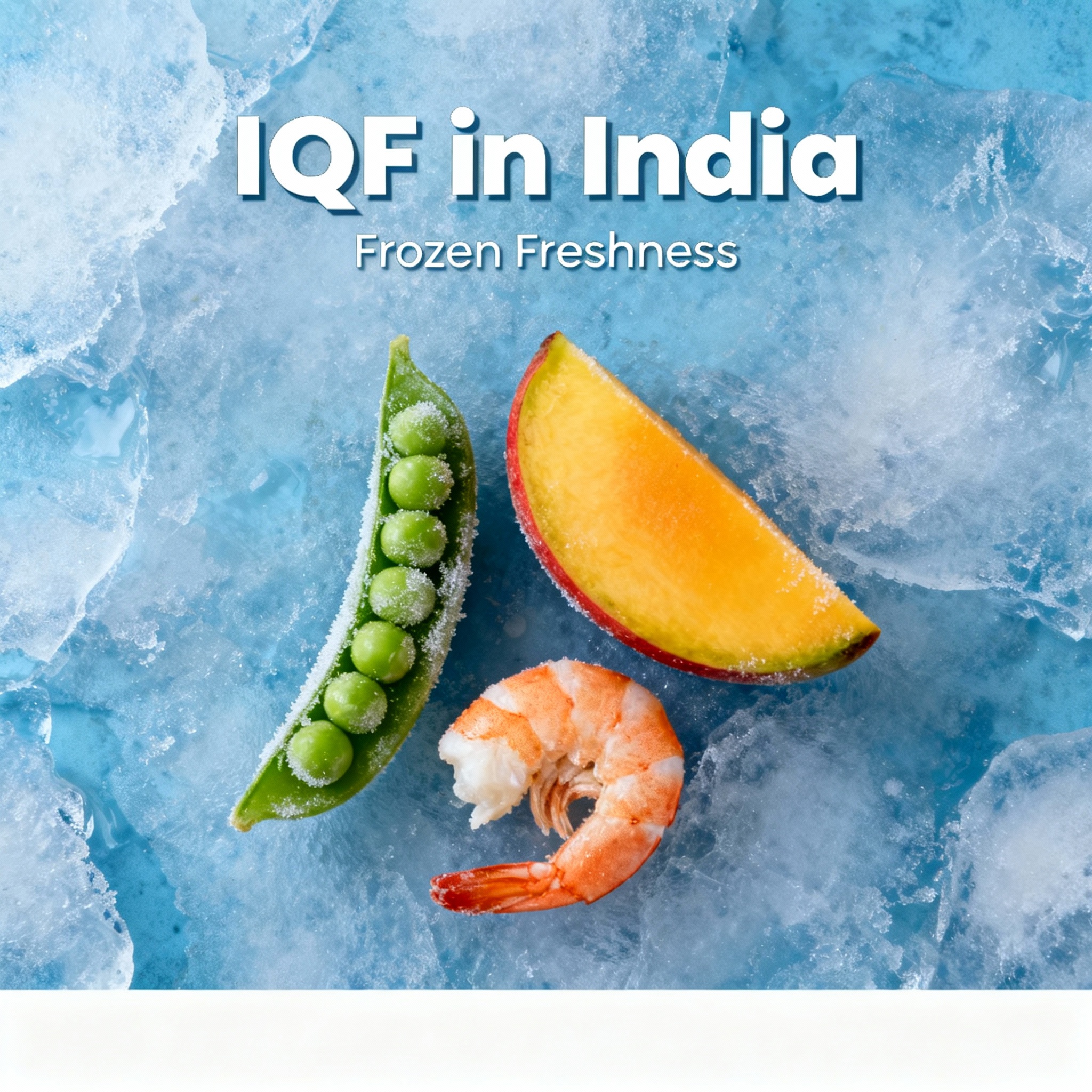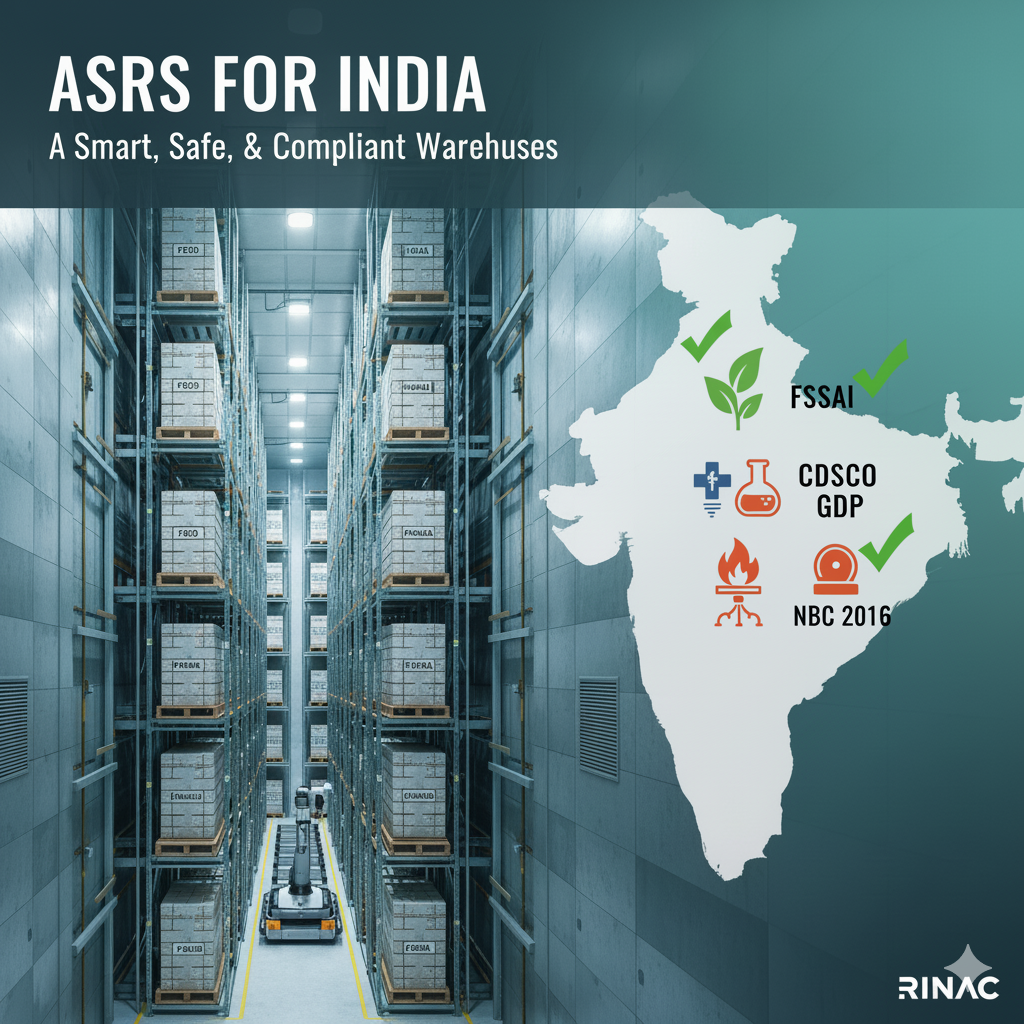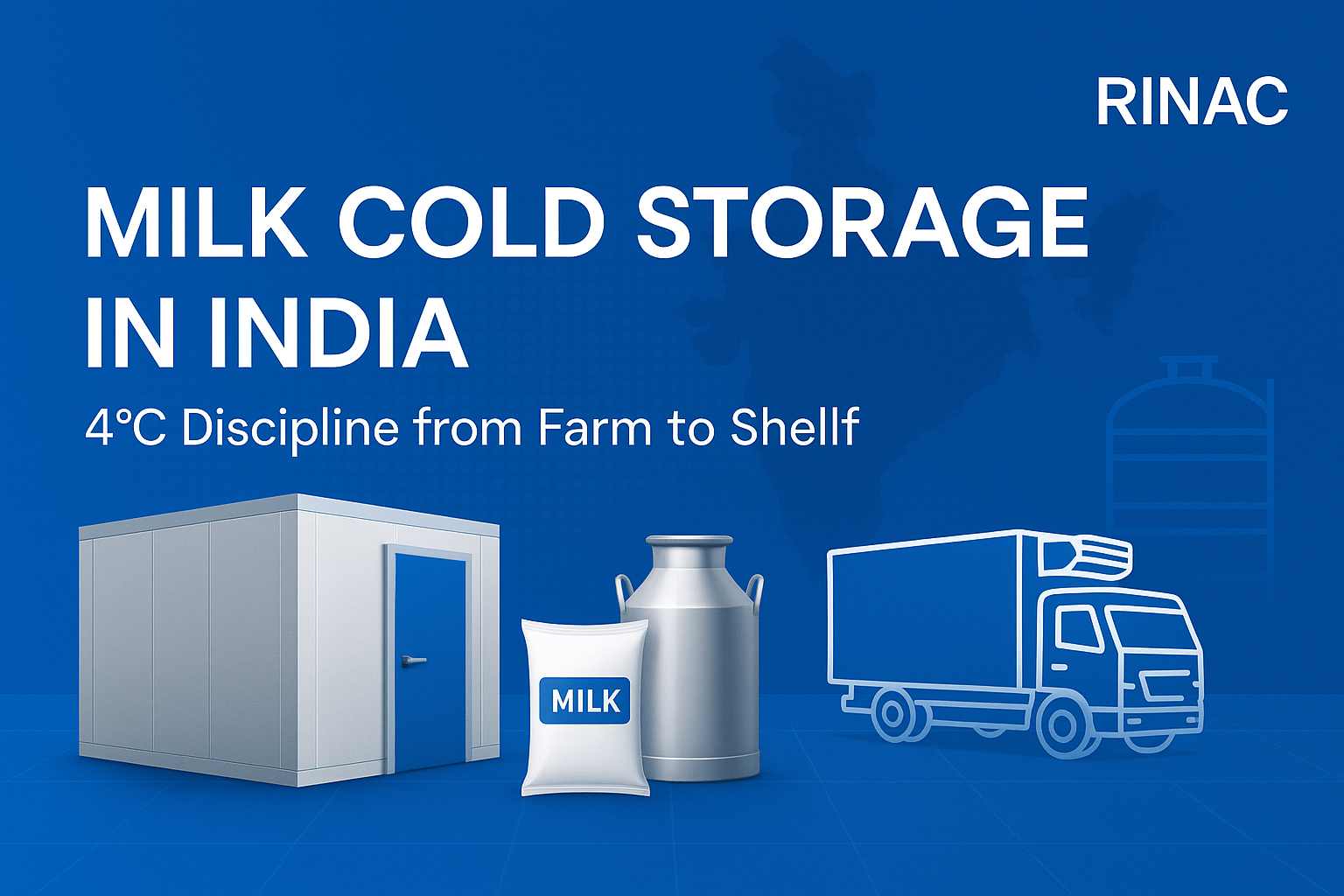Walk-In Chillers vs Walk-In Freezers in India: A Complete Buyer’s & Operator’s Guide

Admin
October 6, 2025


October 6, 2025

Food & beverage manufacturers, QSR/cloud kitchens, pharma & vaccine programs, dairy/meat/seafood processors, horticulture aggregators, hotel/banquet operations, 3PL cold-chain providers, and institutional buyers planning greenfield/expansion projects—especially those who must comply with FSSAI hygiene & temperature controls and Indian Standards for cold rooms.
Core difference: Walk-in chillers (a.k.a. coolers) hold products above freezing, typically 0 °C to +4 °C for chilled foods, while walk-in freezers hold products at or below −18 °C to keep them frozen through storage and distribution.
Indian compliance anchors:
FSSAI Schedule 4 hygiene & sanitation norms apply to storage areas; it explicitly references −18 °C or below for frozen foods, and safe chilled handling (≤ 4 °C for many categories is reflected across FSSAI guidance).
BIS IS 2370:2014 is the specification for walk-in cold rooms; IS 661:2000 covers thermal insulation for cold storage. Use these when drafting tenders/tech specs.
Rinac fit: Rinac builds modular walk-in cold rooms (chillers and freezers) engineered to IS 2370 and supplied with RPUF modular panels and redundant refrigeration options, covering typical vaccine, food, and retail cold-chain needs.
Environmental compliance: India has ratified the Kigali Amendment and will phase down HFCs in steps from 2032 through 2047; HCFCs are being phased out under ODS Rules. This affects refrigerant selection & long-term OPEX.
Definitions & Temperature Bands
Where Each Fits in Indian Use-Cases
Compliance & Standards You Must Know (FSSAI, BIS, Environment)
Key Components (Panels, Doors, Floors, Refrigeration, Controls)
Sizing Right: Volume, Heat Load & Pull-Down
Energy Efficiency & Total Cost of Ownership (TCO)
Refrigerants & Future-Proofing under India’s HFC Phase-Down
Hygiene, Food Safety & SOPs (India-Specific)
Validation, Documentation & Audit Readiness
Maintenance Playbook (Quarterly/Annual)
Procurement Checklist & Tender Language (Ready-to-Use)
When to Choose a Chiller vs a Freezer vs a Combi
Why Rinac: Solution Patterns & Reference Specs
FAQs
Walk-in Chiller (Cooler): An insulated room maintaining temperatures above 0 °C for safe holding of chilled items such as produce, dairy, ready-to-eat chilled foods, and certain pharma SKUs. Many Indian references align chilled storage at or below +4 °C depending on product.
Walk-in Freezer: An insulated room maintaining −18 °C or below, the standard frozen storage setpoint across Indian food safety guidance.
Common Indian reference setpoints you’ll see in SOPs and tenders:
Chilled: 0 °C to +4 °C (product-dependent—use your HACCP plan).
Frozen: ≤ −18 °C (storage & distribution).
Rinac’s own product literature mirrors practical ranges: +2 °C to +8 °C for walk-in coolers in vaccine/food contexts, and −18 °C to −20 °C for freezers.
Chillers fit best for:
Fresh produce & dairy: Hold quality for retail & processing lines.
Ready-to-eat/HoReCa: Cloud kitchens, hotels, and caterers staging chilled SKUs safely before service.
Pharma (non-frozen): Many biopharma/vaccine SKUs are kept +2 °C to +8 °C, as seen in program specs.
Freezers fit best for:
Meat/seafood, frozen veg, frozen desserts: Maintain inventory integrity at ≤ −18 °C through seasonal fluctuations.
Frozen logistics hubs & 3PL cold-stores: Long-hold inventories feeding e-commerce/DC networks.
Pharma APIs & stability samples (as per product labels)—when specified for deep-freeze.
Combo (Chiller + Freezer) scenarios:
QSR/retail back-room: One envelope, dual zones (capex efficient); consider Rinac PreServa Combi type configurations.
Schedule 4 of the Food Safety & Standards (Licensing and Registration of Food Businesses) Regulations sets general hygienic & sanitary practices for storage, including temperature control. It explicitly cites −18 °C or below for frozen foods. Build your SOPs and monitoring around these anchors.
FSSAI guidance for cold chains consistently reinforces ≤ 4 °C for chilled and ≤ −18 °C for frozen, and temperature logging during storage/transport.
IS 2370:2014 – Walk-in Cold Rooms (Specification). Use this as the baseline technical standard in your specifications.
IS 661:2000 – Thermal Insulation of Cold Storage (Code of Practice). Governs insulation materials and construction practices to achieve performance and durability.
India ratified the Kigali Amendment; national strategy: HFC phase-down in 4 steps from 2032 to 2047 (10%, 20%, 30%, 85%). Your refrigerant choices should anticipate this trajectory.
ODS Rules manage HCFC phase-out; India’s HCFC phase-out plan is ongoing under the Montreal Protocol (freeze from 2016; phase-out by 2030 for production/consumption under HPMP). Avoid legacy HCFC tech in new builds.
Panels:
RPUF (Rigid Polyurethane Foam) modular panels with appropriate thickness (e.g., 60–80 mm for chillers, 100–150 mm+ for freezers; finalize by heat-load calc & climate zone). Conform to IS 661 insulation practices; Rinac supplies EN 14509 panel-conforming systems and builds walk-ins to IS 2370.
Doors:
High-quality swing or sliding doors with heater wires for freezers to prevent gasket freezing; robust hinges/latches, emergency release.
Flooring:
Insulated floors with adequate load-bearing and anti-skid finish; freezers typically need vapor barriers & under-floor heating (to prevent heave). Specify load class (trolleys vs pallets vs stackers).
Refrigeration units:
Self-contained (plug-in) vs remote split vs rack systems—select by room size, ambient, and redundancy needs (N+1 where critical).
For mission-critical rooms, dual independent systems (one on standby) are a proven pattern—also referenced in Rinac literature for vaccine/critical storage.
Controls & monitoring:
Digital controllers, data loggers, alarm setpoints, and remote notifications (SMS/IoT) for excursions.
Compliance requires temperature logging and records retention (FSSAI).
A defensible specification in India should document:
Usable storage volume
Calculate based on pallet/tote/gn pan plan + aisle width + racking height.
Remember: FSSAI hygiene dictates separation and airflow; don’t pack beyond design air circulation.
Product heat load
Chillers: Inbound product temp → target 0–4 °C.
Freezers: Inbound may be ambient/chilled; freezing load + pull-down to ≤ −18 °C.
Infiltration & lighting/people load
Factor door openings (specify air curtains/strip curtains), lighting wattage, staff presence.
Ambient design
Many Indian sites see 35–45 °C peak ambient; oversize condensers; locate condensing units with proper ventilation/clearances.
Redundancy & uptime targets
Critical rooms (pharma, high-value meat/seafood) often specify N+1 compressors/condensing units and standby power.
Deliverable you can add to your tender: a heat-load worksheet that explicitly lists: envelope UA, product loads (sensible/latent), infiltration, internal gains, safety factor, and select compressor/evaporator duty accordingly.
What moves the needle in India:
Right-sized compressor & high-efficiency fan motors
Panel thickness & airtight installation per IS 661 best practices
EC fans & LED lighting
Door discipline: Automatic closers, interlocks, strip curtains/air curtains
Defrost optimization for freezers
Floating head pressure and night setback where compatible with load profiles
Why it matters: Energy is the bulk of OPEX over 10–15 years; a slightly higher capex for better insulation and controls often has a <3–4 year payback in hot Indian climates (directional statement—model site-specifically).
India’s national strategy under the Kigali Amendment phases down HFCs in steps from 2032 to 2047. New builds should be designed to minimize refrigerant GWP, ensure serviceability, and maintain safety.
Practical buyer’s note:
Ask vendors for refrigerant roadmap and compatibility (e.g., HFO-blends, lower-GWP HFC alternatives, CO₂ in certain formats) while adhering to applicable safety codes and site constraints.
HCFCs are being phased out under the ODS Rules/HPMP—avoid HCFC-based designs in new procurement.
(This section is intentionally policy-level; pick refrigerants in detailed engineering after site risk assessment, safety classification, and service ecosystem availability.)
Build SOPs aligned to FSSAI Schedule 4 and recognized cold-chain guidance:
Temperature setpoints & logs: Chillers (as per product, commonly ≤ 4 °C); Freezers (≤ −18 °C). Automate logging and keep records for inspections.
Loading/unloading discipline: Designated docks; avoid cross-contamination; never switch off cooling during transport/transfer.
FIFO/FEFO stock rotation; separate raw/cooked, veg/non-veg, allergen zoning per Schedule 4 hygiene principles.
Cleaning & sanitation: Written schedule; validated chemicals & methods compatible with food areas; drain design to prevent standing water.
Pest control & structural upkeep: Seal penetrations; routine panel/door gasket checks.
Calibration: Thermometers, probes, and data loggers calibrated on a defined frequency; document certificates.
What Indian auditors expect to see:
Room qualification pack: As-built drawings, panel specs, U-values (per IS 661), and refrigeration datasheets.
Temperature mapping (summer/winter) and setpoint/alarms records.
FSSAI Schedule 4 compliance checklist entries that show sanitation programs, personal hygiene, pest control, and temperature logs.
Corrective Action/Preventive Action (CAPA) for excursions.
Service & maintenance logs (compressor, evaporator, defrost, door heaters, controllers).
Daily/Weekly:
Check setpoints, door seals, and observe any icing at thresholds.
Verify logger timestamps and downloads.
Wipe spills; keep drains clear to avoid biofilm.
Monthly/Quarterly:
Inspect panel joints, cam-locks, vapor seals.
Clean condenser/evaporator coils with approved agents; verify fan operation.
Test door heaters on freezers; check defrost schedule effectiveness.
Annual:
Comprehensive system health audit; verify controller firmware, alarm dial-outs.
Re-map temperature distribution during extreme seasons for critical storage rooms.
(Align frequency with OEM/AMC guidance and risk level of stored products.)
Use this language in Indian tenders to minimize ambiguity:
Standards: “Walk-in cold room shall conform to BIS IS 2370:2014; insulation materials and installation shall comply with BIS IS 661:2000.”
Temperatures: “Chiller setpoint 0 °C to +4 °C (product-specific), Freezer setpoint ≤ −18 °C; continuous logging & alarms; records retained as per FSSAI Schedule 4.”
Panels: “Modular RPUF panels of x mm (chiller) / y mm (freezer) with certified U-values; hygienic food-grade finishes; sealed vapor barrier.” (Thickness by load calc.)
Doors & floors: “Heated door frames for freezers; insulated floor with vapor barrier; anti-skid surface; under-floor heater as required by site conditions.”
Refrigeration: “Energy-efficient compressors; EC fans; redundancy for critical rooms (N+1). Remote condensing units placed per ambient design.”
Controls: “Digital control with data logging, high/low temp alarms, power fail alarm. Minimum 2-year data retention.”
Environment: “Refrigerant selection to comply with India’s HFC phase-down roadmap and ODS Rules; vendor to disclose refrigerant GWP and serviceability.”
Documents: “As-built pack, commissioning reports, temperature mapping, AMC terms, spare parts list.”
Choose a Chiller if:
Throughput is high and you are staging fresh product for <7–10 days.
Your HACCP plan specifies chilled handling ≤ 4 °C and you don’t need frozen inventory.
Choose a Freezer if:
Inventory turns are slower; you need long-term holding at ≤ −18 °C (seafood/meat/frozen veg/desserts).
Choose a Combi if:
You operate a mixed portfolio (QSR/retail back-room, small processing units) and want one envelope with dual zones for capex/space efficiency.
Rinac is an Indian pioneer in cold-chain infrastructure with modular walk-in solutions for chillers and freezers. Typical configurations include RPUF modular panels and options for dual independent refrigeration circuits for critical rooms (standby readiness), with temperature ranges suitable for vaccine +2 °C to +8 °C and frozen −18 °C to −20 °C systems. Conformance to IS 2370 is part of Rinac’s quality position.
Solution patterns to discuss with Rinac:
PreServa (Chiller) rooms for produce/dairy/QSR staging.
PreServa (Freezer) rooms for meat/seafood/frozen lines.
PreServa Combi where chilled and frozen zones share structure but remain isolated.
Value-adds you can request:
Turnkey build including site civil interface guidance (plinth, vapor barrier, drainage).
Integrated monitoring (data logger + alarms) with remote alerts.
AMC & 24×7 support footprints aligned to your geography and uptime SLAs.
Energy optimization audit post-commissioning (defrost tuning, door discipline, airflow).
Documentation pack for FSSAI/BIS compliance and audits (as-built, IQ/OQ, mapping).
Q1: Is −18 °C mandatory for all frozen foods?
It is the widely cited storage requirement for frozen foods in India (FSSAI Schedule 4 references −18 °C or below). Follow your product labels/HACCP and any sector-specific guidance.
Q2: Do we need temperature mapping?
For critical rooms (high-risk foods, pharma), yes—especially across seasons in India. It supports audit-readiness and validates load/airflow assumptions (good practice under Schedule 4’s hygiene and control ethos).
Q3: What about switching off refrigeration at night to save energy?
Do not. FSSAI cold-chain guidance emphasizes maintaining temperatures and continuous logging; cycling off risks excursions and compliance breaches, especially for frozen stocks.
Q4: Which standards should appear in our PO?
IS 2370:2014 for walk-in rooms, IS 661:2000 for thermal insulation; embed FSSAI Schedule 4 controls and documentation requirements.
Q5: How does refrigerant policy affect my decision?
India will phase down HFCs between 2032 and 2047, and HCFCs are being phased out under ODS Rules—pick refrigerants with lower GWP and robust service support; ask suppliers for a forward compatibility plan.
Room type & temp: Walk-in Chiller at +2 °C to +4 °C / Freezer at ≤ −18 °C with continuous logging and alarm notifications.
Standards: BIS IS 2370:2014 & IS 661:2000; sanitation & record-keeping per FSSAI Schedule 4.
Construction: Modular RPUF panels (thickness by calc) with food-grade finish; sealed vapor barrier; insulated floor suited to loads; heated door frames for freezers.
Refrigeration: High-efficiency compressors & EC fans; redundancy (N+1) for critical rooms; remote condensing units sized for site max ambient.
Controls: Digital controller, data logger (downloadable), high/low temperature alarms, power fail alarm, and 2-year data retention minimum.
Environment: Refrigerant selection aligned to India’s HFC phase-down trajectory and ODS policy; vendor to declare GWP and service readiness.
Documentation: As-built pack, commissioning reports, seasonal mapping, AMC, spares.
Rinac supplies modular walk-in chillers and freezers engineered for Indian conditions, with IS 2370-aligned construction, RPUF modular panels, and redundant refrigeration options for critical cold chains (vaccine, pharma, food). If you’re consolidating chilled and frozen storage, PreServa Combi configurations reduce footprint while respecting zoning and airflow.
Next steps (free worksheet on request):
Share your SKU plan, daily receipts/dispatches, and peak ambient.
We’ll run a heat-load & panel thickness recommendation, and configure monitoring & AMC to your audit needs.

October 6, 2025

September 29, 2025

September 24, 2025

September 13, 2025